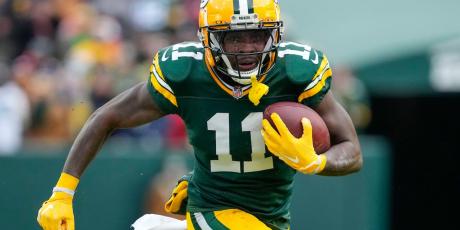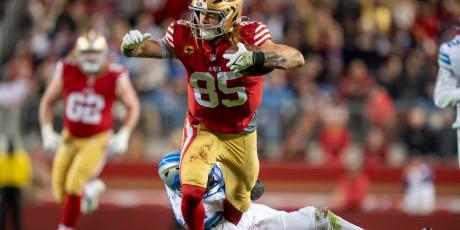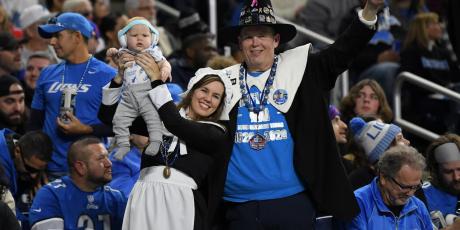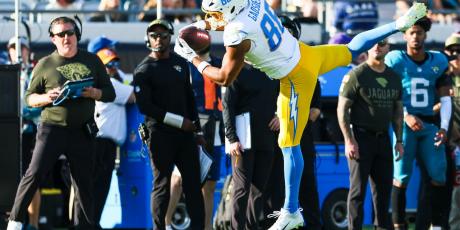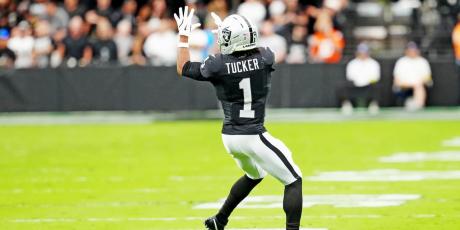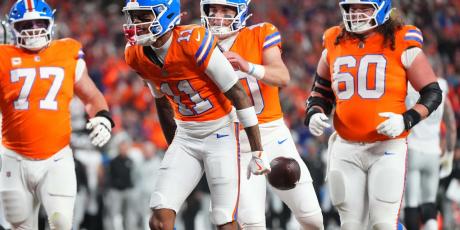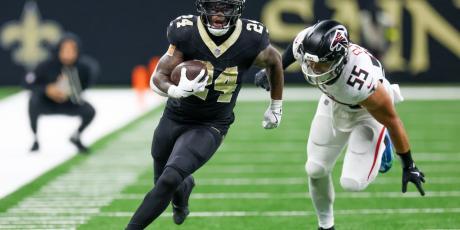Embrace the Volatility: Get Backup RBs on Good NFL Teams
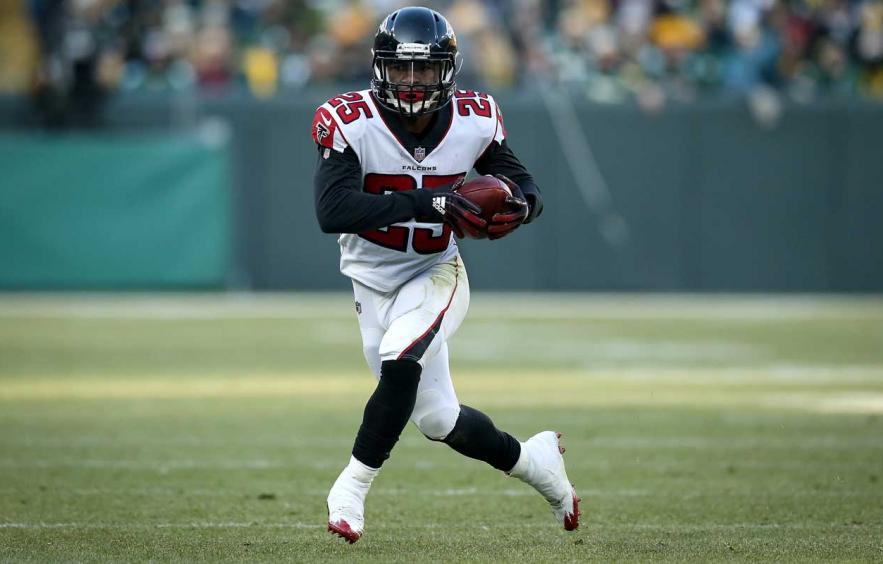
My redraft strategy hinges on scooping up a bunch of running backs late in drafts who could—just maybe—inherit a full workload when volatility strikes during the NFL season’s long slog.
While I don’t discount drafting backups runners on bad NFL teams, I try to roster at least a few backs on the league’s best teams who could end up with reliable early-down work if injuries strike or Bane hatches another evil plot at an NFL stadium.
The idea seems sound: rostering backup runners on teams that will see plenty of positive game script means those guys should see lots of second-half carries when their team has a lead and can continue running the rock to bleed the clock. It’s the less-than-great teams that are often forced into one-dimensional pass-first offensive attacks as they chase points—except for teams coached by dinosaurs like Jeff Fisher and John Fox.
I didn't have the statistical proof showing this process was in fact not terrible. So I did what I always do and compiled a bunch of numbers.
Below is a quick look at the difference between rushing attempts among NFL teams that ended the season with at least 11 wins, and those that didn’t win more than five games. The cutoffs, admittedly, are a bit arbitrary. There were a handful of 10-win squads that established the run and never relented on the ground attack. Alas, a cutoff had to be made, so I made it. Scream at your computer screen if you disagree.
| Year | Rushing Att., 11+ Win Teams | Rushing Att., 11+ Loss Teams |
|---|---|---|
| 2018 | 447.9 | 389.9 |
| 2017 | 464.6 | 420.5 |
| 2016 | 436.5 | 395.8 |
The starkest difference, as you can see, came in 2018, with the good teams running the ball 58 times more than the lowly teams over the season. The 2016 and 2017 seasons had slightly less eye-opening results, but the point stands: NFL teams that win a lot of games are in position to run the ball more, and perhaps most importantly, more consistently (the rushing attempts averages among the worst 2017 teams were buoyed by the five-win Broncos running the ball 457 times and the four-win Colts posting 451 rushes). We’ve all been there: you have the workhorse running back for a team going into a road game with his team as a 12-point underdog. Single-digit carries are certainly in the range of outcomes for the beleaguered workhorse. Do you start said workhorse over the timeshare running back on the good team who could easily fall into a bunch of late-game carries? You don't know, so you yell "the process" into an embroidered pillow for a few minutes.
Before we get into who, exactly, could benefit from positive game script in 2019, let’s do a quick case study examining the real-life effects of positive script. The 2018 Saints, winner of 13 games, ran the ball 10.43 times on average in the fourth quarter, while the six-win Packers notched an average of 4.87 rushes in the fourth quarter. The six-win Bengals ran the ball 5.8 times per fourth quarter in 2018. Meanwhile, the Bears—winner of 12 games in 2018—posted 7.93 fourth-quarter rushes. On a single-game basis, it doesn’t seem like a massive difference. But it is. This is the epicenter of rushing volume—to ignore it is to eschew the most important piece of fantasy football’s maddening puzzle.
Let’s get into the running backs who could wind up being plug and play options hauling the pigskin for winning NFL teams that almost always have the luxury of keeping it on the ground in the second half of games.
Forget chasing pass-catching backs, those third-down specialist fantasy teases. We want the full running back workload, the whole enchilada—hold the guac because I’m allergic.
Latavius Murray, Saints
Whatever you think of Murray—and maybe it’s not much—you have to like that the big guy likely has every-week value along with the unspeakable upside of being the main ball carrier should something happen to Alvin Kamara. You’re drafting Murray in the seventh or eighth round of 12-team redraft leagues for the same reason you took Mark Ingram, who averaged 13.2 rush attempts per game over his final 28 games with New Orleans. The upside is downright tantalizing.
Carlos Hyde, Chiefs
Probably Kansas City won’t suck this year, which should set up that good old fashioned positive game script for Damien Williams. And if something befalls the polarizing Chiefs runner, there’s Carlos Hyde, available in the 10th or 11th round. Hyde likely won’t be useful for fantasy players until or unless Williams goes down, but it seems he would be the guy to get the work. I don’t care the Hyde had been bad in his whirlwind tour of NFL teams. He’s a running back. He doesn’t matter. Any back will be able to post solid numbers in Patrick Mahomes’ Perfect Machine. Hyde is something close to an auto-draft for me in the 10th if I’ve gone receiver heavy to start a draft.
Ito Smith, Falcons

- All Premium Content
- The most Accurate Rankings Since 2010
- Expert Draft Picks w/DraftHero
- Highest Scoring Lineup + Top Available Players w/LeagueSync
- ...and much much more



